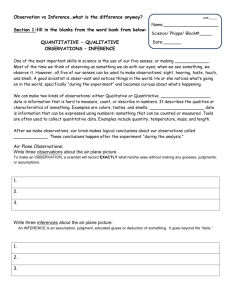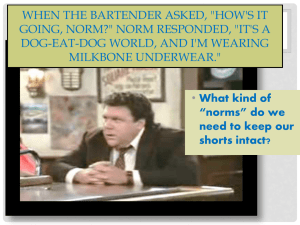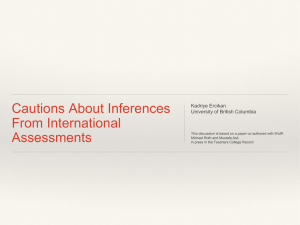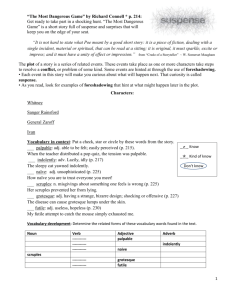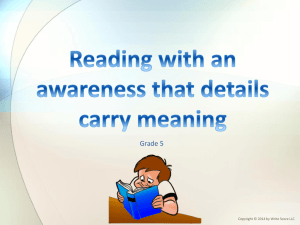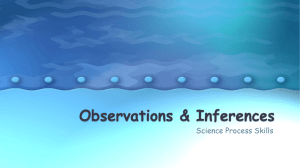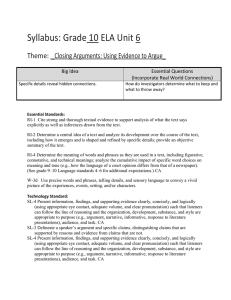Observations & Inferences
advertisement
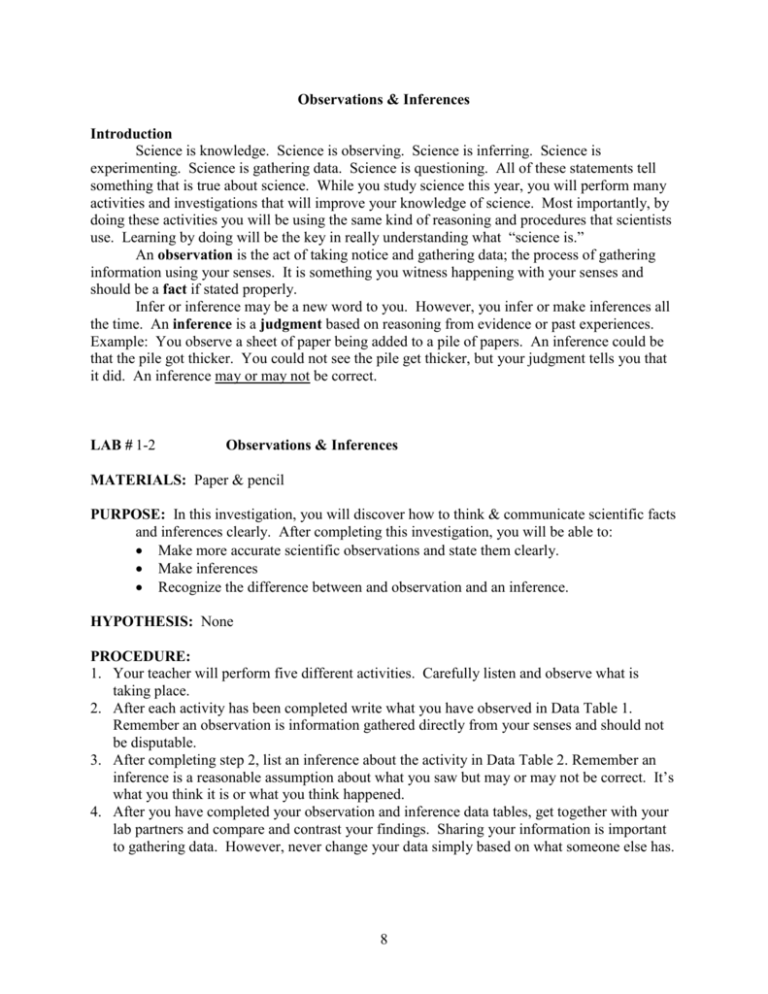
Observations & Inferences Introduction Science is knowledge. Science is observing. Science is inferring. Science is experimenting. Science is gathering data. Science is questioning. All of these statements tell something that is true about science. While you study science this year, you will perform many activities and investigations that will improve your knowledge of science. Most importantly, by doing these activities you will be using the same kind of reasoning and procedures that scientists use. Learning by doing will be the key in really understanding what “science is.” An observation is the act of taking notice and gathering data; the process of gathering information using your senses. It is something you witness happening with your senses and should be a fact if stated properly. Infer or inference may be a new word to you. However, you infer or make inferences all the time. An inference is a judgment based on reasoning from evidence or past experiences. Example: You observe a sheet of paper being added to a pile of papers. An inference could be that the pile got thicker. You could not see the pile get thicker, but your judgment tells you that it did. An inference may or may not be correct. LAB # 1-2 Observations & Inferences MATERIALS: Paper & pencil PURPOSE: In this investigation, you will discover how to think & communicate scientific facts and inferences clearly. After completing this investigation, you will be able to: Make more accurate scientific observations and state them clearly. Make inferences Recognize the difference between and observation and an inference. HYPOTHESIS: None PROCEDURE: 1. Your teacher will perform five different activities. Carefully listen and observe what is taking place. 2. After each activity has been completed write what you have observed in Data Table 1. Remember an observation is information gathered directly from your senses and should not be disputable. 3. After completing step 2, list an inference about the activity in Data Table 2. Remember an inference is a reasonable assumption about what you saw but may or may not be correct. It’s what you think it is or what you think happened. 4. After you have completed your observation and inference data tables, get together with your lab partners and compare and contrast your findings. Sharing your information is important to gathering data. However, never change your data simply based on what someone else has. 8 DATA TABLES: (make your date lines large enough to write in your data) Data Table #1 - Observations Activity Observations 1 2 3 4 5 Data Table #2 - Inferences Activity Inferences 1 2 3 4 5 QUESTIONS: 1. Is an observation considered a fact? 2. Explain your answer to the question above. 3. Is an inference considered a fact? 4. Explain your answer to the question above. ANALYSIS & REFLECTION should include: (remember at least one paragraph in complete sentences) 9
